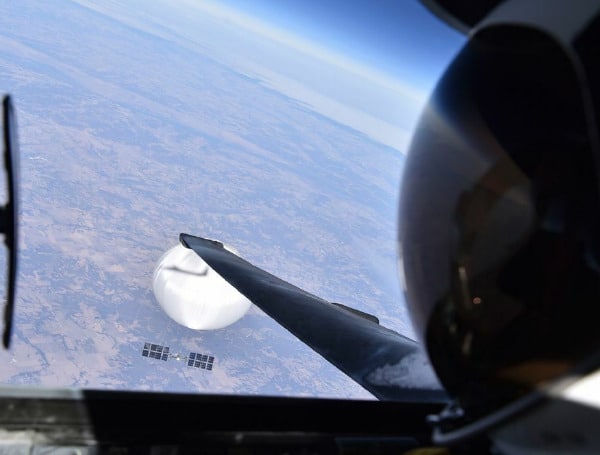
The head of North American Aerospace Defense Command (NORAD), Gen. Glen VanHerck, and the top U.S. general at the time spoke over the phone on January 27, which set off an eight-day crisis as the Biden administration frantically tried to respond to a new threat from China, according to NBC News.
According to NBC, Biden administration officials privately regretted that the public uproar and fallout for Beijing’s reputation that followed the spy balloon’s revelation that shocked the world in early 2023 strained ties with China and exaggerated the real threat to national security that the balloon posed.
According to NBC, which cited a number of current and former administration and congressional officials, the administration originally intended to hide the balloon’s existence from Congress and the general public.
Related: Report: Pentagon Refuses To ID “Senior Defense Official” Who Blamed Chinese Spy Balloons On Trump
“Before it was spotted publicly, there was the intention to study it and let it pass over and not ever tell anyone about it,” one former senior U.S. official briefed on the situation told NBC.
A senior official in the Biden administration refuted any attempt to hide the incident, stating that choices were made to safeguard critical intelligence capabilities.
“To the extent any of this was kept quiet at all, that was in large part to protect intel equities related to finding and tracking them,” the official told NBC. “There was no intention to keep this from Congress at any point.”
According to NBC, intelligence officials informed VanHerck that they had been monitoring a large object that had traveled through the Indo-Pacific and entered American airspace over Alaska. During the phone call on January 27, VanHerck informed Gen. Mark Milley that he intended to send aircraft on sorties to fly alongside the object and try to determine its characteristics.
Targeting pods were used by American military aircraft shortly after the call to identify the object as a balloon the size of three school buses that had a large surveillance payload but no offensive capability, according to NBC.
VanHerck started inundating senior DOD officials, such as Secretary of Defense Lloyd Austin and Milley, with information about the object’s whereabouts, possible flight path, danger, and most likely intention.
On January 31, three days following the phone conversation, Biden’s assistants notified him of the item. Although Biden asked for options for a military response, his advisors informed him that Americans would be put in danger by thousands of pounds of debris falling 65,000 feet to Earth in a potential debris field that might be 70 miles wide and 70 miles long.
Related: Biden Is Soft On China Despite Widespread Acts Of Spying On U.S. Assets, Even The White House
However, NBC News notified the administration that it intended to report that a Chinese spy balloon was passing over the United States on February 1 after a resident of Montana spotted the balloon, the outlet reported. To set the tone, officials arranged last-minute briefings for Congress and the press.
Following the release of information about its transit, the balloon ceased sending signals back to China. According to U.S. officials, China may have intended for the balloon to self-destruct instead of returning it to China for the purpose of retrieving images and other types of data that were stored within.
In the past, representatives from the Department of Defense and the National Security Council claimed to have taken action to shield critical infrastructure from the Chinese balloon’s spying capabilities.
That was also the first time Austin discussed the balloon with VanHerck, answering a call from Asia at three in the morning.
“They weren’t paying attention,” a senior U.S. official later told NBC.
Biden gave the military the order to shoot down the balloon as soon as it was safe to do so. After figuring out how to lessen the effects of a shoot-down, the military and NASA eventually brought the object down six miles off the coast of South Carolina.
President Joe Biden’s pledge to create standards of conduct in the skies has not materialized nearly a year later, and VanHerck is concerned that the United States does not yet have the radar capacity to track long-range aerial threats before they reach American soil, according to an NBC report. Beijing is still sending out surveillance balloons all over the globe.
“It caused so many problems,” one senior administration official told NBC.
Android Users, Click To Download The Free Press App And Never Miss A Story. Follow Us On Facebook and Twitter. Sign up for our free newsletter.
We can’t do this without your help. Visit our GiveSendGo page and donate any dollar amount; every penny helps.
